预约演示
更新于:2025-05-07
Combined Bacillus Subtilis and Enterococcus Faecium Granules with Multivitamines, Live(Hanmi Pharmaceutical Co., Ltd.)
枯草杆菌二联活菌(Hanmi Pharmaceutical Co., Ltd.)
更新于:2025-05-07
概要
基本信息
在研机构 |
非在研机构- |
权益机构- |
最高研发阶段批准上市 |
最高研发阶段(中国)批准上市 |
特殊审评- |
登录后查看时间轴
关联
7
项与 枯草杆菌二联活菌(Hanmi Pharmaceutical Co., Ltd.) 相关的临床试验NCT06612411
Purine Starvation Driven by Host-microbiota Maladaptation Contributes to the Pathogenesis of Irritable Bowel Syndrome
This is a prospective, single-blind, randomized parallel study to investigate whether B. subtilis could improve clinical symptoms of IBS-D patients. Patients are randomly assigned by envelope method. A senior gastroenterologist is responsible for prescribing medication. Researchers are blind to patients' medication. Participants with IBS are recruited and randomized to receive a 4-week administration of B. subtilis-based probiotics. Clinical symptoms and stool samples are collected before and after the trial.
开始日期2024-06-01 |
NCT05658055
The Effect of Probiotics With Vonoprazan-amoxicillin Dual Therapy on Gut Microbiotain After Helicobacter Pylori Eradication: A Randomized Controlled Trial
The purpose of this study is to evaluate the effect of probiotics during vonoprazan-amoxicillin dual therapy on the gut microbiota in Helicobacter pylori eradication and to investigate whether the eradication rate of H.pylori will be improved when adding probiotics
开始日期2023-06-01 |
申办/合作机构 |
TCTR20210128003
The effectiveness of probiotic Bacillus subtilis on reduction of Staphylococcus aureus colonization in the intestinal tract and nasal cavity
开始日期2021-01-29 |
申办/合作机构 |
100 项与 枯草杆菌二联活菌(Hanmi Pharmaceutical Co., Ltd.) 相关的临床结果
登录后查看更多信息
100 项与 枯草杆菌二联活菌(Hanmi Pharmaceutical Co., Ltd.) 相关的转化医学
登录后查看更多信息
100 项与 枯草杆菌二联活菌(Hanmi Pharmaceutical Co., Ltd.) 相关的专利(医药)
登录后查看更多信息
243
项与 枯草杆菌二联活菌(Hanmi Pharmaceutical Co., Ltd.) 相关的文献(医药)2025-04-01·Inflammopharmacology
Bacillus subtilis (NMCC-path-14) ameliorates acute phase of arthritis via modulating NF-κB and Nrf-2 signaling in mice model
Article
作者: Naz, Sadaf ; Khan, Jehan Zeb ; Mazhar, Muhammad Usama ; Ghazanfar, Shakira ; Zulfiqar, Tayyaba ; Tipu, Muhammad Khalid ; Hilal, Fahim
2025-04-01·Meat Science
Effect of long-term dietary supplementation with Bacillus subtilis in pigs on meat color and oxidative stability under high‑oxygen packaging
Article
作者: Yu, Jiang ; Zhang, Yue ; Mao, Yanwei ; Wang, Wei ; Zhang, Yimin ; Wu, Hao ; Wu, Jiaqiang ; Liu, Fei
2025-03-26·Journal of animal science
Effects of a Bacillus-based direct-fed microbial on digestibility, ruminal in situ nutrient disappearance, microbiome, and fermentation parameters in forage-fed beef cattle.
Article
作者: Cooke, Reinaldo F ; Marques, Rodrigo S ; Vestergaard, Gisle ; Limede, Arnaldo C ; Rodrigues, Aline N ; Cidrini, Fernando A A ; Gresse, Raphaele ; Cruz, Vinicius A ; Cappellozza, Bruno I ; Queiroz, Amanda C M ; Farias, Iasmin M S A ; Souza, Izadora S ; Scholljegerdes, Eric J ; Cidrini, Iorrano A
7
项与 枯草杆菌二联活菌(Hanmi Pharmaceutical Co., Ltd.) 相关的新闻(医药)2025-03-28
Our analysis of February data reveals key trends in global preclinical-stage biopharmaceutical financing. For contextual understanding, we recommend beginning with the following article.
Highlights of Financing and Strategic Collaborations in the Preclinical Biopharmaceutical Sector: February 2025(1)
12.Harbour BioMed and Insilico Medicine Form Strategic Partnership to Advance AI-Driven Antibody Discovery and Development
Harbour BioMed and Insilico Medicine have established a strategic partnership aimed at accelerating the development of therapeutic antibodies by integrating artificial intelligence (AI) with antibody research. This collaboration seeks to leverage AI’s potential in antibody applications and target-specific research, aiming for breakthrough advancements in biopharmaceutical innovation. The partnership not only underscores AI’s growing importance in drug discovery but also highlights the transformative power of cross-industry collaboration in driving innovation.
According to the agreement, both companies will combine Harbour BioMed’s expertise in antibody development with Insilico Medicine’s AI-driven drug discovery platform. Notably, Insilico Medicine’s Integrated Drug Creation™ platform, which utilizes generative AI and a scalable wet lab system, can significantly reduce the time from data collection to molecular design and experimental validation to approximately six weeks. This highly efficient research process dramatically accelerates drug discovery and facilitates rapid clinical trial progression for promising drug candidates.
The initial phase of the collaboration will focus on specific disease targets, although financial terms and drug details have not been disclosed. However, given that similar partnerships in the industry often involve multimillion or even billion-dollar deals, both companies are expected to make substantial investments to ensure the project’s success. Additionally, Insilico Medicine has already achieved significant milestones in collaborations with major pharmaceutical companies, such as AstraZeneca, which suggests that its partnership with Harbour BioMed could generate substantial economic and social value.
As AI continues to reshape the healthcare industry, more pharmaceutical companies are exploring ways to integrate AI into their R&D pipelines. The Harbour BioMed-Insilico Medicine collaboration exemplifies this trend, demonstrating how AI-driven solutions can enhance global competitiveness and set a benchmark for industry innovation. Looking ahead, similar cross-sector collaborations are expected to emerge, further propelling advancements in biopharmaceutical research.
Despite its immense potential, AI-driven drug discovery still faces challenges, including data privacy concerns, algorithmic transparency issues, and regulatory uncertainties. While AI accelerates research efficiency, stakeholders must work collectively to address these challenges. Through continuous technological innovation and the establishment of robust regulatory frameworks, AI is poised to play an increasingly pivotal role in future drug discovery and development, ultimately providing more effective treatment options for patients worldwide.
13. Epitopea Partners with MSD to Develop RNA-Based Cancer Immunotherapies
On February 19, 2025, transatlantic cancer immunotherapy company Epitopea announced a licensing and research collaboration agreement with Merck & Co. (MSD) to identify Cryptigen™ tumor-specific antigens (TSAs) in an undisclosed solid tumor type. These antigens originate from non-coding regions previously considered "junk DNA" and exhibit shared, non-mutated, and aberrant expression across multiple patients. Through this collaboration, the two companies aim to leverage Epitopea's proprietary CryptoMap™ platform to discover novel immunogenic Cryptigen™ TSAs and develop off-the-shelf RNA-based immunotherapies for various refractory cancers.
Under the terms of the agreement, Epitopea will use its CryptoMap™ platform to identify and provide novel Cryptigen™ TSAs for predefined tumor types. MSD will have exclusive rights to develop and commercialize any therapeutic products resulting from the collaboration. In return, Epitopea will receive an undisclosed upfront payment and be eligible for milestone payments of up to $300 million per product. This financial arrangement not only highlights MSD’s commitment to the project but also underscores the immense potential of Epitopea’s technology platform.
At the core of Epitopea’s technology is its CryptoMap™ platform, which integrates immunopeptidomics, genomics, and bioinformatics pipelines to identify aberrantly expressed tumor-specific antigens hidden within cancer "junk" DNA. This innovative approach opens new avenues for developing highly effective immunotherapies targeting specific tumor types. Furthermore, since these antigens are commonly present across multiple patients, therapies based on them can be applied to a broader patient population, enhancing accessibility and efficacy.
This collaboration not only validates Epitopea’s technological capabilities but also positively impacts the entire cancer immunotherapy field. As more partnerships of this kind emerge, the number of therapies targeting newly discovered tumor-specific antigens is expected to grow significantly in the coming years. For MSD, this collaboration strengthens its leadership in immuno-oncology and could yield a series of breakthrough therapies. At the same time, it marks a step forward in the transition from traditional chemotherapy to more personalized and precise cancer treatments.
Since its founding, Epitopea has garnered support from top life sciences investors, including Advent Life Sciences, CTI Life Sciences, and Cambridge Innovation Capital. To date, the company has raised over $45 million, providing a strong financial foundation for its R&D activities. Epitopea plans to accelerate the development of its preclinical pipeline as it moves toward becoming a clinical-stage company. With the deepening collaboration with MSD, Epitopea is poised to introduce a range of innovative cancer immunotherapies in the coming years, offering hope to cancer patients worldwide.
14. Polymed Partners with Photys Therapeutics for Global Development of HPB-143
On February 18, 2025, Polymed announced a major partnership with Photys Therapeutics, granting Photys the rights to develop, manufacture, and commercialize the IRAK4-targeting protein degrader HPB-143 in all global markets except Greater China and Southeast Asia. In return, Polymed will receive multiple forms of compensation, including upfront and near-term payments, clinical development milestone payments, and sales royalties, while also holding an equity stake in Photys. This collaboration aims to accelerate the development of HPB-143 and expand its global market presence.
Compared to the IRAK4-targeting protein degrader KT-474, which is currently in Phase II clinical trials internationally, Polymed’s HPB-143 has demonstrated superior oral bioavailability, reaching 49% in mouse studies. Additionally, it exhibits weaker inhibition of the cardiac ion channel hERG, suggesting improved cardiovascular safety in humans. In multiple mouse disease models, HPB-143 has shown lower effective doses and superior efficacy. As a PROTAC (Proteolysis-Targeting Chimera), HPB-143 specifically degrades the IRAK4 protein by hijacking the intracellular ubiquitin-proteasome system, effectively modulating key signaling pathways involved in inflammatory responses and tumor progression.
IRAK4 plays a crucial role in human inflammatory responses and tumorigenesis, making it a highly promising target for protein degraders in treating autoimmune diseases such as atopic dermatitis and hidradenitis suppurativa. The therapeutic demand for these conditions remains largely unmet, with existing treatments often limited by efficacy or side effects. With its unique mechanism of action and superior pharmacological profile, HPB-143 has the potential to provide a safer and more effective treatment option for patients.
HPB-143 has already secured approval from both the U.S. FDA and China's National Medical Products Administration (NMPA) to conduct clinical trials. According to Photys Therapeutics' plan, a Phase I clinical study for HPB-143 is set to launch this year, marking a critical step in evaluating the drug's safety, tolerability, and preliminary efficacy. As clinical trials progress, HPB-143 has the potential to become one of the first-in-class IRAK4 degraders to reach the market, offering new hope for patients with autoimmune diseases worldwide.
This partnership not only reflects the global recognition of Polymed’s PROTAC drug development platform but also signifies the commitment of both companies to advancing HPB-143’s development through resource integration. Photys Therapeutics, leveraging its proprietary PHICS™ technology and other proximity-based modalities, is dedicated to developing a pipeline of therapies targeting cancer, autoimmune diseases, and cardiometabolic disorders. Through this collaboration, both companies have the opportunity to expand their product portfolios and achieve multiple key development milestones in the coming years. For the broader pharmaceutical industry, this partnership serves as a positive signal of the potential of innovative therapies in addressing unmet medical needs.
15. Perceive Pharma Secures $15 Million Series A Funding to Advance Ophthalmic Neuroprotective Therapy
On February 18, 2025, Perceive Pharma, a company focused on developing novel small-molecule ophthalmic therapeutics, announced the completion of a $15 million Series A funding round. The financing was backed by several renowned investment firms, including Deerfield Management, Johnson & Johnson Innovation – JJDC, Inc., Braidwell LP, GV, Retinal Degeneration Fund, and Catalio Capital Management, LP. The funds will be used to advance its glaucoma program to the clinical readiness stage and further expand its research pipeline.
One of Perceive Pharma’s core products is PBI-671, a first-in-class drug candidate designed to prevent vision loss caused by glaucoma. All currently approved glaucoma treatments focus on reducing intraocular pressure (IOP), yet approximately half of glaucoma patients continue to experience vision loss despite having normal IOP. PBI-671 is based on a neuroprotective pathway first identified through genomic screening and aims to directly protect retinal cells, offering a potential treatment for patients whose disease continues to progress despite existing therapies.
Perceive Pharma's research and development efforts are built on a strong scientific foundation, providing the company with a unique advantage in identifying new therapeutic targets and developing transformative vision-protection therapies. With the successful completion of its Series A financing, the company will accelerate the advancement of its lead therapy to address the medical needs of more than 1.5 million patients worldwide suffering from progressive glaucoma. Additionally, Perceive Pharma plans to explore treatment opportunities for other undisclosed diseases.
Notably, Perceive Pharma is part of JLABS @ San Diego, a division of Johnson & Johnson Innovation – JLABS, a global life sciences incubator network. Through this platform, startups gain access to cost-efficient laboratory space, equipment resources, and expert support, helping to accelerate the development of innovative products. Such support is crucial for emerging companies like Perceive Pharma as they navigate critical growth and development stages.
16. Lexenpharm and Sun-Novo Pharmaceutical Join Forces to Revolutionize Asthma and COPD Treatment
Recently, Lexenpharm and Sun-Novo Pharmaceutical announced a regional strategic partnership for the development of two innovative drug projects, LXP2311 and LXP0531, in mainland China. Through this collaboration, both companies will leverage their technological expertise to advance the research, development, and commercialization of these breakthrough therapies, bringing new hope to the medical industry.
Current COPD treatments primarily rely on short-acting or long-acting monotherapies, which often have limited efficacy and duration of action. To address this challenge, Lexenpharm and Sun-Novo have jointly developed LXP2311 and LXP0531, the world's first ultra-long-acting combination inhalation formulations. In particular, LXP2311, the first ultra-long-acting LABA/LAMA combination therapy, requires only once-daily administration and can be delivered via a standard jet nebulizer, significantly enhancing patient convenience. Meanwhile, LXP0531 is the first ultra-long-acting ICS/LABA combination therapy, recommended for the treatment of asthma and COPD, offering improved ease of use for both physicians and patients.
The success of the LXP2311 and LXP0531 projects is supported by five core technologies, including nebulized inhalation formulation and soft mist inhalation technology. These advancements not only enhance drug efficacy and safety but also significantly improve the patient experience. For instance, the application of nano-scale sterile suspension technology and Blow-Fill-Seal (BFS) aseptic technology ensures efficient drug delivery and stability within the body, providing better disease control. These technological innovations are expected to have a substantial impact on improving treatment outcomes for asthma and COPD patients worldwide.
Asthma and COPD remain major global public health concerns, with COPD ranking as the second leading disease in China and the third leading cause of death worldwide. It is estimated that COPD results in an annual global economic burden exceeding $4.3 trillion, with China alone bearing a financial burden of $1.36 trillion. Given the severity of this situation, the development of more effective and convenient treatment options is an urgent necessity. The partnership between Lexenpharm and Sun-Novo reflects their commitment to addressing this critical need by providing better therapeutic solutions for patients.
17.DAAN Biotherapeutics and LigaChem Biosciences Enter Exclusive Antibody Licensing Agreement to Advance ADC Therapy Development
February 13, 2025, Seoul, South Korea – DAAN Biotherapeutics, a leading innovative drug development company specializing in T-cell receptor (TCR)-based therapies, has announced an exclusive licensing agreement with LigaChem Biosciences. This collaboration aims to develop a novel tumor-targeting antibody to facilitate the advancement and commercialization of antibody-drug conjugates (ADCs). By leveraging their respective technological strengths, the two companies will work together to drive progress in ADC therapies for solid tumor patients.
With its cutting-edge next-generation antibody technology, superior target discovery, and antibody development capabilities, DAAN Biotherapeutics has successfully built a proprietary pipeline focused on developing antibodies targeting tumor markers overexpressed in solid cancers. This achievement is supported by its strategic partnership with OmniAb. Additionally, DAAN has developed a platform called TACTIC (Tumor-Activated Conditional T-cell Connector), designed to be a global leader in solid tumor-targeted T-cell activators. These technological advancements provide a strong foundation for the development of ADC therapies.
The collaboration between DAAN Biotherapeutics and LigaChem Biosciences represents an effective integration of their technologies and resources, marking a significant milestone in the field of solid tumor treatment. It is expected to accelerate the development of novel ADC therapies and provide patients with more effective treatment options. As the partnership deepens, more research findings are anticipated to translate into practical applications, contributing to the fight against cancer.
Looking ahead, DAAN Biotherapeutics plans to continue expanding its collaborations with global pharmaceutical companies, particularly in the ADC sector. Furthermore, the company aims to achieve breakthroughs in T-cell therapies, especially through the development of novel T-cell connectors using its TACTIC platform. Through continuous exploration and innovation, DAAN Biotherapeutics is steadily advancing toward its goal of becoming a global leader in cancer treatment.
18.Xilio Therapeutics Announces Multiple Masked T-cell Engager Programs and Collaboration Agreement with AbbVie
February 12, 2025 – Xilio Therapeutics, Inc., a clinical-stage biotechnology company focused on discovering and developing tumor-activated immunotherapies, has announced three wholly-owned preclinical programs targeting prostate-specific membrane antigen (PSMA), claudin 18.2 (CLDN18.2), and six-transmembrane epithelial antigen of the prostate 1 (STEAP1) with masked T-cell engagers. Additionally, Xilio has entered into a collaboration, licensing, and option agreement with AbbVie to leverage Xilio’s proprietary tumor-activated technology platform to develop novel tumor-activated immunotherapies.
T-cell engagers are designed to direct immune effector cells against cancer cells by simultaneously binding tumor-associated antigens expressed on the surface of cancer cells and the T-cell receptor complex on T cells, thereby inducing T-cell-mediated tumor cell killing. However, despite their significant therapeutic potential in various advanced solid tumors, the widespread application of T-cell engagers has been limited by toxicity concerns. Xilio is utilizing its clinically validated tumor-activated platform to advance a series of novel masked T-cell engagers with conditionally regulated half-life properties, aiming to achieve potent, localized T-cell activation and tumor cell destruction while improving the therapeutic index.
Xilio is currently progressing three wholly-owned preclinical programs, each targeting a distinct tumor-associated antigen:
·PSMA – a promising T-cell engager target for prostate cancer
·CLDN18.2 – a potential T-cell engager target for gastric, pancreatic, esophageal, and lung cancers
·STEAP1 – a viable target for prostate, colorectal, and lung cancers
Xilio expects to nominate development candidates and submit Investigational New Drug (IND) applications for these programs in the coming years.
Under the terms of the collaboration agreement with AbbVie, Xilio will receive a total upfront payment of $52 million, including $42 million in cash and $10 million in Xilio common stock purchased by AbbVie at a premium. Xilio has granted AbbVie an exclusive option to initiate an initial program for the discovery and development of masked T-cell engagers, with the potential for two additional programs to be launched under the agreement. Moreover, Xilio will be eligible for up to $2.1 billion in additional milestone payments, including option fees, as well as development, regulatory, and commercial sales milestones.
Based on its current operational plans, Xilio expects its existing cash and equivalents, combined with the upfront payment from the AbbVie agreement, to fund its operating and capital expenditure needs until the first quarter of 2026. Xilio will hold an investor conference call and webcast on February 12, 2025, to provide further details on this announcement and invite investor participation. These strategic moves not only strengthen Xilio’s financial position but also ensure continued investment in future research and development.
19.Ellipses Pharma Acquires First-in-Class Next-Generation Immuno-Oncology Drug GENA-104 to Accelerate Cancer Treatment Development
Ellipses Pharma Limited (Ellipses), a global drug development company dedicated to accelerating cancer treatment through innovative drug development models, announced on February 11, 2025, that it will develop a next-generation immuno-oncology drug aimed at addressing the needs of cancer patients who do not respond to existing checkpoint inhibitors. Ellipses has secured the global rights to ‘GENA-104,’ a first-in-class immuno-oncology monoclonal antibody targeting CNTN4, a recently identified checkpoint protein highly expressed across multiple tumor types.
GENA-104 was originally discovered by the South Korea-based biotechnology company Genome & Company (Genome), which specializes in the development of novel cancer-targeting antibodies and antibody-drug conjugates (ADCs). Under the agreement with Genome, Ellipses will assume full responsibility for the future clinical development of GENA-104, designating it as EP0089. The potential of EP0089 as a novel immuno-oncology therapy was highlighted in a landmark study published in Science Immunology in October 2024.
The Phase I IND application for EP0089 was approved by the South Korean Ministry of Food and Drug Safety in January 2024. Ellipses plans to initiate Phase I clinical trials in South Korea in 2025 and subsequently expand to the United States and Europe upon obtaining the necessary regulatory approvals. This new therapeutic approach aims to inhibit the CNTN4-APP checkpoint interaction on T cells, thereby enhancing tumor cell destruction, making it particularly promising for cancers resistant to traditional checkpoint inhibitors.
This collaboration marks a significant milestone for Ellipses Pharma in expanding its pipeline and represents a crucial advancement in cancer treatment. By acquiring breakthrough candidates such as EP0089, Ellipses reaffirms its commitment to rapidly identifying and developing top-tier therapies to provide new treatment options for patients as quickly as possible. As further research data emerges and clinical trials progress, EP0089 has the potential to transform the treatment landscape for certain refractory cancers, offering new hope to patients worldwide.
20.Alloy Therapeutics Partners with Pfizer to Develop a New Antibody Discovery Platform
Boston, February 11, 2025 – Alloy Therapeutics Inc. (Alloy), a biotechnology ecosystem company committed to democratizing access to cutting-edge drug discovery technologies, has announced its latest strategic collaboration with Pfizer. This partnership aims to develop a novel platform designed to enhance Pfizer’s ability to discover highly specific and effective antibodies for challenging targets that current antibody discovery technologies struggle to address. Under the terms of the agreement, Alloy will receive an upfront payment from Pfizer and will be eligible for pre-specified preclinical-to-commercial milestone payments related to products developed using the new platform.
Alloy’s ATX-Gx platform has rapidly become the industry standard for fully humanized transgenic mice, utilized by over 170 partners to advance various therapeutic discovery programs. Alloy remains committed to reinvesting its revenue into innovation and has continuously expanded its murine platform by incorporating ATX-GL™, which features a complete human lambda library, and ATX-GKH™, an ultra-immune strain designed to enhance antigen-specific B-cell production and improve IgG class switching.
In addition to this collaboration, Alloy and Pfizer have worked together on multiple antibody discovery initiatives, including the use of Alloy’s ATX-CLC platform. This platform enables the expression of common light-chain antibodies with full heavy-chain diversity, facilitating the efficient and modular discovery of bispecific antibodies.
21.Bolt Biotherapeutics and Toray Collaborate on a Novel ISAC Therapy Targeting Caprin-1
On February 11, 2025, Bolt Biotherapeutics announced a global collaboration with Toray Industries to co-develop a therapeutic targeting Caprin-1, a novel cancer target discovered by Toray. The two companies are working together to develop a Boltbody™ immune-stimulating antibody-drug conjugate (ISAC) targeting Caprin-1, intended for use in multiple solid tumor types. Under the existing joint development and licensing agreement, Toray is providing its proprietary Caprin-1-targeting antibody, TRK-950, while Bolt contributes its proprietary linker-payload technology from the Boltbody™ ISAC platform.
Caprin-1 is a tumor-specific antigen that is highly expressed on the cell membrane of most solid tumors while exhibiting minimal expression in normal tissues. Additionally, Caprin-1 has been shown to promote tumor growth and metastasis. Toray’s asset, TRK-950, is a monoclonal antibody targeting Caprin-1 and is currently in Phase II development for gastric cancer, validating the antigen’s potential as an ISAC target. TRK-950 functions by binding to and attacking cancer cells expressing Caprin-1, with particularly strong expression observed in gastric cancer and other solid tumors, as well as in metastatic cancer cells and cancer stem cells.
Bolt’s Boltbody™ ISAC platform combines the precision of antibodies with the strength of both innate and adaptive immune systems to reprogram the tumor microenvironment and generate potent anti-cancer responses. Each Boltbody™ ISAC candidate comprises a tumor-targeting antibody, a non-cleavable linker, and a proprietary immune-stimulatory payload. This combination activates myeloid cells, initiating a positive feedback loop that releases cytokines and chemokines, attracts additional immune cells, lowers the activation threshold of immune responses, and enhances the number of activated immune system cells in the tumor microenvironment, ultimately promoting a robust immune response.
In recent years, Toray has increasingly focused on "Life Innovation," accelerating advancements in medical technology and disease prevention with the goal of alleviating the burden on healthcare professionals and helping people live longer, healthier lives. Oncology has been identified as a key area of focus, and Toray is committed to developing industry-leading therapeutic approaches with the potential to significantly improve patient outcomes. The collaboration with Bolt is part of Toray’s broader mission to create a healthier society through the development of innovative medicines, reflecting the shared commitment of both companies to providing better treatment options for cancer patients across various indications.
This partnership builds upon the highly productive interactions between Alloy and Pfizer, further solidifying the companies’ collaboration in antibody discovery and technological innovation. Through joint efforts, the two parties aim to drive scientific progress and accelerate the development of new therapies, ultimately benefiting patients. As the collaboration advances, it is expected to yield additional breakthrough innovations that will contribute to the global healthcare landscape.
22.XtalPi Holdings and Probable Biotechnology Join Forces to Accelerate First-in-Class Drug Discovery
On February 10, 2025, XtalPi Holdings announced the completion of a strategic investment in Probable Biotechnology and the establishment of an in-depth research and development collaboration. Together, the two companies will advance the discovery and development of First-in-Class (FIC) drugs targeting novel mechanisms identified by Probable Biotechnology to address significant unmet clinical needs. This partnership aims to leverage XtalPi’s cutting-edge AI and robotics-driven platform alongside Probable Biotechnology’s pioneering research in translational regulation to accelerate drug development.
Probable Biotechnology specializes in modulating cellular states through ribosome and kinase methylation switches, developing small-molecule targeted therapies for major diseases such as cancer and inflammation. XtalPi, known for its industry-leading AI and robotics-powered drug discovery platform, integrates high-precision quantum physics-based computational chemistry algorithms with over 300 AI models. This platform enables efficient exploration of large-scale chemical space to design and optimize molecules with both innovation and strong drug-like properties. By partnering with XtalPi, Probable Biotechnology will gain access to powerful computational and experimental tools, significantly enhancing the speed and success rate of its FIC drug development efforts.
The first project under this collaboration focuses on small-molecule inhibitors targeting the RAS-MAPK signaling pathway, particularly for pan-cancer indications associated with RAS mutations. These inhibitors have demonstrated the ability to overcome resistance to KRAS-targeted therapies in resistant mouse models. When used in combination with existing standard-of-care therapies, they have shown significant advantages in tumor growth inhibition, prolonged survival, and reduced mortality in preclinical studies.
Additionally, Probable Biotechnology is developing a novel small-molecule inhibitor for the treatment of acute pancreatitis. Preclinical data indicate promising pharmacokinetic properties, efficacy, and a favorable safety profile, offering a potential new therapeutic option for patients.
By combining Probable Biotechnology’s expertise in translational regulation with XtalPi’s AI-driven drug discovery capabilities, this partnership aims to push the boundaries of innovation in drug development. Through this collaboration, the two companies seek to accelerate the discovery of transformative therapies, bringing hope to patients suffering from challenging diseases worldwide.
23.LEO Pharma and DEBRA Research Collaborate to Advance Treatment for Epidermolysis Bullosa
LEO Pharma and DEBRA Research announced a partnership aimed at accelerating the development of treatments for epidermolysis bullosa (EB). This rare genetic disorder causes extremely fragile skin that can blister and develop wounds from minor friction or trauma. The collaboration will not only enhance understanding of EB's pathological mechanisms but also develop new therapeutic strategies to improve patients' quality of life.
Epidermolysis bullosa is a group of heterogeneous genetic disorders characterized by mutations in structural skin proteins that lead to varying degrees of skin and mucosal fragility. Current treatments primarily focus on wound care, pain management, and infection prevention, lacking fundamental therapies targeting the underlying cause. For certain severe types of EB, such as dystrophic EB, existing treatments often fail to effectively control symptoms, creating an urgent need for innovative therapeutic approaches.
The collaboration between LEO Pharma and DEBRA Research will focus on basic research and clinical trials, exploring various novel therapies including gene therapy. For example, the topical gene therapy B-VEC has shown significant efficacy in promoting wound healing in dystrophic EB patients during Phase 3 clinical trials. Additionally, researchers are investigating other cell-based therapies such as bone marrow transplantation and protein replacement therapy. Through this partnership, both parties hope to discover more effective treatments and accelerate their translation into clinical applications.
While the specific financial terms of the collaboration remain undisclosed, it is anticipated that LEO Pharma, as an international pharmaceutical company specializing in dermatology, will provide substantial funding and technical resources for the project. This will help accelerate the translation from laboratory to market, enabling new therapies to benefit patients more quickly. Meanwhile, DEBRA Research, as an organization long committed to EB research and patient support, will contribute its disease-specific expertise and network resources.
As the collaboration between LEO Pharma and DEBRA Research deepens, it is expected to yield a series of breakthrough research outcomes in the near future. Beyond directly improving the health of EB patients, this partnership will also enhance the medical community's understanding of genetic skin disorders. More importantly, it demonstrates the tremendous potential of cross-institutional collaboration in addressing rare diseases, providing a replicable model for treating other similar conditions. Ultimately, such collaborations may alleviate the socioeconomic burden on EB patients and their families while improving their quality of life.
Summary
Looking back at February 2025, we can observe several notable characteristics and trends in financing, collaborations, and licensing activities in the preclinical drug sector. First, capital market enthusiasm has not waned; rather, driven by both policy support and technological advancements, investment in the biopharmaceutical industry has continued to grow. According to statistics, by the end of February, the global biopharmaceutical sector had completed financing activities totaling over $3.2 billion, providing crucial funding support to numerous early-stage R&D companies and helping them bridge the gap from laboratory to market.
Second, in terms of international collaborations, Chinese companies are gradually becoming a force to be reckoned with. Whether through technology import or product export, Chinese pharmaceutical firms are actively exploring partnership models with international counterparts to accelerate their development. This is particularly evident in the antibody-drug conjugate (ADC) field, where Chinese companies have performed exceptionally well. A prime example is the collaboration between CSPC Pharmaceutical and Radiance Biopharma. Such cross-border partnerships not only enhance product market competitiveness but also lay a solid foundation for subsequent R&D efforts.
How to get the latest progress on drug deals?
If you would like to access the latest transaction event information, you can click on the 'Deal' module from the homepage of the Synapse database. Within the Deal module, you can search for global pharmaceutical transaction information using labels such as Drugs, Organization, Target, Drug Type, Deal Date.
Furthermore, you can obtain the original link to the transaction coverage by clicking on the "Deal Name."
In the analysis view, you can see the most active assignors, assignees, popular targets, and other dimensions of analysis, as well as the distribution of research and development statuses at the time of the transaction, to help you better understand the search results.
The Synapse database also supports the ability to view current transactions from the dimension of "drugs" (by selecting "drugs" from the "Adjust Dimension" dropdown menu above). Targeting transactions involving renowned pharmaceutical companies that are of interest to the industry, such as Merck, Roche, etc., Synapse has identified a group of "leading companies" through drugs that have achieved global sales exceeding 1 billion US dollars in 2022. Transactions involving drugs from these leading companies can be filtered by clicking on the "Leading Company" tag on the left-hand side.
In addition to the drug transaction module, you can also view related transaction history on the drug detail page and the institution detail page.
Click on the image below to explore new pharmaceutical funding transactions!
2024-12-26
·动脉网
中国宠物市场正迎来前所未有之蓬勃发展机遇!
随着宠物在家庭角色中的日益重要,从单纯的情感寄托升级为不可或缺的家庭成员,宠物市场持续扩大,消费升级的趋势愈发显著。根据《2023—2024 年中国宠物行业白皮书(消费报告)》,2023 年中国城镇宠物消费市场规模已达到 2793 亿元,较 2022 年增长 3.2%。该报告还预计到 2026 年城镇宠物消费市场规模将达 3613 亿元。
有宠物的地方就会有消费,而在众多宠物领域中,宠物医药以其高壁垒、市场急需和消费属性,被认为是“开拓宠物产业空间的关键点”。
总体来看,国内宠物行业“缺医少药”现象严重——药品品种数量少、重大疾病治疗药物较为缺乏,未能有效覆盖临床用药需求,国内专门研发宠物医药的企业数量较少,创新能力有待提升,产品种类有待进一步丰富和拓展。
从全球宠物药品市场细分来看,抗寄生虫药物占宠物药品最大份额,达27.5%;其次是生物制品(如疫苗)占22.6%,抗感染药品占17%等。随着国内宠物老龄化到来,宠物消化系统疾病、代谢疾病、心脑血管疾病、内分泌疾病、神经系统疾病等领域缺乏有效治疗药物,市场空间较大。
参考美国宠物医药市场,约有400种药物用于犬、猫,甚至还有专门为宠物开发的防晕车药、抗抑郁药、减肥药、避孕药等……国内宠物医药行业发展方兴未艾。
在此背景下,勤智资本立足于国内宠物医药行业发展态势,率先在该领域进行布局,其发起的勤智宠乐基金作为湾区首只宠物医疗大健康主题基金,承载着政府、产业方和项目方的共同期待。目前,该基金已投资布局了多个优秀的早中期项目。
近期,动脉网对勤智宠乐基金的合伙人史立明进行了专访。
勤智宠乐基金合伙人 史立明
本文核心观点:
1、像驱虫药、皮炎药市场已基本被国际动保龙头公司占据。国内宠物医药企业也在开发类似产品,但产品缺乏创新,市场竞争激烈。我们更关注宠物进入老年期后的健康问题,如肥胖、肿瘤、心血管疾病等老年病和慢性病,这些领域缺乏创新和有效的药品。
2、国内宠物医药行业目前面临两大挑战:一是缺医少药,即有效医疗资源和有效药物不足;二是市场上虽有中低端药品获批上市,但其并不能有效解决宠物的疾病问题,导致有效供给不足而无效供给过剩。
3、宠物药更注重经济性,不仅要能治病,而且价格不能过高。所以宠物创新药企业必须拥有丰富的产品管线,覆盖广泛的疾病领域,以支撑起销售收入。
4、虽然宠物医疗器械发展迅速,但由于缺乏监管,投资该行业可能面临较高的合规风险。
5、总的来说,勤智宠乐将围绕宠物小分子创新药、生物制品创新平台、医疗检测、创新医疗器械平台、宠物保健品等方向布局。
以下是动脉网和史立明对话(经编辑):
01
聚焦中早期宠物创新药投资
动脉网:2022年10月26日,在勤智资本成立七周年之际,勤智资本发起的东莞科创勤智宠乐生物医药基金(即“勤智宠乐”)正式完成工商注册,基金规模近亿元人民币。为什么在那时候会成立一支宠物医疗大健康基金?
史立明:勤智资本自成立以来始终深耕医疗大健康产业投资。2022年,我们发现宠物经济虽然发展迅速,但宠物医疗行业却面临缺医少药的困境,像驱虫药、特异性皮炎、常用疫苗等,70%的市场都是被国际动保龙头公司主导的。另一方面,国内监管机构陆续出台相应法规,鼓励和规范行业发展,而勤智资本在医疗行业厚积了大量的行业经验和产业资源,所以那时候我们决定在宠物医疗大健康,尤其是宠物医疗大健康里的创新药进行投资布局。
其实在勤智宠乐基金成立前,我们就投资了专注宠物疫苗研发企业“赫兹生命”,这是一家基于VLPs(病毒样颗粒)技术的新型疫苗研发平台型企业。企业最初在疫情期间想进军人用疫苗,但我们的孵化团队综合考量后发现,无论是国内宠物疫苗企业还是国际动保公司,其疫苗技术都比较落后,所以我们对赫兹生命进行了整体的谋划,从团队建设、管线选择、融资设计、包括我们天使轮投资后又把国内龙头CXO企业诺威利华介绍给赫兹生命,进行资源导入,让赫兹生命在研发进展和临床试验上形成先发优势。
目前,赫兹生命的疫苗产品管线包含去势疫苗、猫多联疫苗、猫传腹疫苗等,并且猫短效去势疫苗已完成所有临床试验,准备申报NDA;另外猫多联疫苗也完成了临床前台实验,准备申请IND。
同时,基于东莞市生物药产业布局和石龙镇的产业基础及资源优势,我们建议他们发展新型兽药和宠物医药经济。所以基于以上三个契机,我们成立了勤智宠乐。
动脉网:请介绍下勤智宠乐。
史立明:勤智宠乐由勤智资本于2022年10月成立,致力于成为国内有特色的宠物药领域中早期基金。该基金由勤智资本作为管理人、诺威利华、石龙产投、东莞科创专精特新及多家石龙产业资本合作设立。
作为勤智资本在生物医药“空间+产业+布局”的投资细分新方向,勤智宠乐旨在解决宠物医药研发的核心痛点。现已成功孵化和投资了宠物疫苗龙头企业赫兹生命、国内动保数字化企业南星数字、动保疫苗佐剂及载药平台以研发企业药弈生命;并拟对宠物细胞药物、宠物眼科、代谢疾病等细分领域的项目加大投资。
动脉网:除了日常生活中常见的猫猫狗狗,“宠物”其实也包含了蜥蜴、兔子、仓鼠、蜘蛛等异宠,勤智宠乐的投资版本也包括异宠相关的药品吗?
史立明:我们也留意到异宠市场的快速发展,比如国内的异宠展会更多了,一些头部宠物医院也增设了异宠专科。但我们也发现,异宠市场发展虽快,但同时也面临着专业医生稀缺、市场规模相对有限、行业发展仍处于初期阶段等挑战。我们也找到了相关标的企业进行研究,但目前尚未重点关注。
动脉网:勤智资本涉及生物医药、创新药和医疗器械投资;宠物产业除药品器械外,也有宠物食品、宠物用品、宠物服务等,为什么勤智宠乐会小切口聚焦宠物医药?
史立明:我们对宠物医疗器械行业也有投资意向。但当前我国的兽医器械行业审评法规和监管尚不明确。兽药管理条例于2004年发布,前后经历了3次修订,而我国兽医器械管理、监管方面仍没有建立基础的体系。
虽然宠物医疗器械发展迅速,但由于缺乏监管,投资该行业可能面临较高的合规风险。行业也在积极呼吁,希望尽快出台相关评审办法,那样我们就能够有底气、有信心地投资。
动脉网:宠物保健品主要包括宠物处方粮、保健品、宠物药品,您能介绍下这三类产品的特点吗?
史立明:我们理解的宠物保健品是个较为宽泛的概念,主要包括宠物处方粮、保健品、宠物药品(包括创新药)这几个细分领域。
宠物处方粮:随着科学养宠的观念越发普及,加之宠物老龄化发展趋势,近年来处方粮市场发展迅速。针对宠物常见的皮肤、肠胃、关节等健康问题,相关产品也备受瞩目。在此背景下,传统宠物食品企业纷纷布局,国内市场呈现出多元化竞争、品牌并存的格局,尚未形成高度集中的局面。尽管皇家、希尔斯等知名品牌凭借行业积累和品牌优势占据了一定市场份额,但在新兴品牌及本土企业的冲击下,仍存在较大的市场空间和机会窗口。同时我们也要直面行业挑战:国产处方粮品质参差不齐、相关市场的监管与执行力度尚需加强;同时,多数宠物主对处方粮的认知较浅,甚至误将其视为治疗疾病的“灵丹妙药”,而忽视了宠物的日常健康管理与疾病预防。
宠物保健品:宠物保健品需求也在持续上扬,肠胃调理、护肤美毛、建骨补钙等保健品均是当前市场的热门产品。
宠物药品:宠物数量增长与老龄化趋势共同抬升了宠物药需求。然而当前国内专注宠物医药研发的企业和药品种类都较为局限,除常规疫苗、驱虫药及皮炎药物外,针对宠物消化、代谢、心脑血管、内分泌及神经系统疾病的特效药匮乏。因此,具备平台技术创新能力的宠物药品研发企业是我们关注的重点。
中国宠物市场步入老龄化时代,国产宠物新药需兼顾有效性、经济性、丰富性。
动脉网:宠物药也有很多细分垂类,比如才接回家的猫猫狗狗需要驱虫药、疫苗等,宠物生病了需要皮肤药、抗炎药等,宠物老了可能又需要心脏病的药、关节的药等。在宠物全生命周期的不同阶段会有无数的药品选择,勤智宠乐关注宠物药下哪些具体的细分机会呢?
史立明:这个问题非常好。从宠物的整个生命周期来看,猫狗幼年时期需要大量的医疗投入,比如妙三多、猫多联、犬多联疫苗以及治疗皮肤病和驱虫的药物。但我们目前对这些领域关注不多,像驱虫药、皮炎药市场已被国外动保公司垄断。虽然国内宠物医药企业也在开发类似产品,但市场竞争激烈,比如猫三联,国内市场一下子获批上市的有10余家,导致行业更加白热化,厂商利润急剧压缩。
我们更关注宠物进入老年期后的健康问题,如肥胖、肿瘤、心血管疾病等老年病和慢性病,这些领域缺乏创新和有效的药品,是我们重点布局的方向。
动脉网:宠物创新药也会和人类创新药一样存在“双十定律”吗?
史立明:宠物新药研发需考虑不同品种间的差异。例如仅犬类就有超过100个品种,不同品种间存在体重、肝功能、肾功能、发病机制不同等差异,导致剂量不尽相同。尽管宠物创新药研发周期长、风险高,但相比于人类药物,其无需进行人体临床试验,因此研发投入和审批时间更具优势。但需要特别注意的是,宠物创新药除了有效性,还必须兼顾经济性。
动脉网:据您观察,当前国内宠物药面临的最大挑战是什么?
史立明:现阶段的最大挑战是有效供给不足,即有效的医疗资源和有效药物不足。虽然国内市场上已有百余种药品获批上市,但并不能有效解决宠物的疾病问题,导致有效供给不足而无效供给过剩。要推动行业发展,创新是关键。正如人药行业的发展一样,创新药的快速发展使得国内市场更加健康,宠物医药行业亦然。要想在全球宠物医药市场占据一席之地,创新必不可少。
动脉网:当前的宠物医疗很多都是把人的需求市场在宠物身上重做一遍。很多人药企业基于已有的技术产品改造后延伸到宠物领域,不知道您怎么看这样的现象或评估这样的项目?
史立明:这是客观存在的。前面我们也提到了国内宠物医疗缺医少药。为满足宠物临床实际用药需求,中国兽医药品监察所2023年底发布了《宠物临床急需使用的人用药品目录(61种)》供宠物用药研发企业参考,旨在鼓励将急需的人类药物转换为宠物药物使用。
然而需要注意的是,由于动物与人类的生理代谢机制不同,简单地将人类药物直接转为兽药,可能无法实现预期的治疗效果,因此在宠物医药的研发和临床验证阶段还需进行更为深入的工作。此外,这种简单转换的门槛相对较低,无需过多研发投入,会导致市场上缺乏有力的竞争和真正的创新。因此,我们更关注那些具备创新能力的项目和团队。
动脉网:小红书上有很多人药兽用的分享,比如猫咪腹泻可以吃蒙脱石散、妈咪爱,猫咪便秘可以吃乳果糖口服溶液等。您怎么看这种人药兽用这种情况呢?
史立明:严格来讲,兽药和人药是不能混用的。国务院颁布的《兽药管理条例》第四十一条明确规定,禁止将人用药品用于动物。第62条虽规定了罚则,但只规定了对违法单位的处罚,而未规定对个人的处罚。刚才提到《宠物临床急需使用的人用药品目录(61种)》其实也是供宠物药企业研发参考的,旨在鼓励企业将这些药品转换成正式获批的宠物药品,而不是直接将人用药用于宠物。
动脉网:您觉得投资人药和宠物药有哪些异同?
史立明:人药和宠物药在市场规模和商业化需求上存在显著差异。人药企业如果研发出一款创新性强、能满足临床需求的药物,单靠这一款药物就能支撑起企业的商业化需求,实现数十亿甚至上百亿的销售额。
相比之下,宠物药品市场规模较小,更注重经济性,宠物药不仅要能治病,而且价格不能过高,因此市场规模和销售额不及人药。所以宠物创新药企业还必须拥有丰富的产品管线,覆盖广泛的疾病领域,以支撑起销售收入。此外,宠物药品企业的商业化能力也至关重要。要成为像硕腾这样的国际宠物药品巨头,国内宠物创新药企业还有很长的路要走。
动脉网:史总您有养宠物吗?
史立明:我们家养过至少三代的猫和狗。那时候的饲养方式比较粗放,没有猫粮狗粮的概念,基本上是我们吃什么就给它们吃什么,偶尔买点鸡肉猪肉做得精细些。生病了也没有宠物医院,只能送到兽医站治疗。现在大家科学养宠的观念越来越深,宠物医院发展也向专科化发展,宠物医疗服务从简单的体检、治疗小病和基本护理,发展到现在能够提供更专业的医疗服务。随着专科化的发展,国内宠物医疗人才逐渐培养成体系,与国外动保行业的交流也日益深入,对先进治疗技术和药品的需求也会随之增加。
动脉网:伴随着中国初代、二代宠物迈入老龄化,“为宠物养老”成为我国宠物行业新的发力点,勤智宠乐有相关布局吗?
史立明:通常猫犬的平均寿命大概在12岁~17岁,6~7岁就开始步入老年阶段。根据《2024宠物行业蓝皮书》数据,宠物老龄化趋势上升,7岁以上老年犬占整体23%,同比23年增长5%;老年猫比例更是同比增长6%,国内宠物老龄化潮正在到来。常见的老年病还有宠物心脏衰竭、糖尿病、白内障、骨质疏松、关节炎、结石等等。
我们关注两个主要领域,一是针对宠物无药可用的临床需求,投资扶持相应药物研发;二是老龄化问题,比如我们积极关注宠物细胞。治疗药物的创业公司,它满足了抗衰老和老龄化相关疾病的需求,包括神经性疾病和老年宠物常见疾病。
除了药品,我们也关注宠物保健品、宠物处方粮、宠物殡葬服务等,但宠物殡葬服务缺乏监管,我们尚未投资。如果有团队能解决这些问题,我们愿意考虑。
动脉网:宠物大健康行业里有很多投资机构,也有很多头部宠物公司下场干投资,比如中宠股份、生物股份、天元宠物、依依股份、源飞宠物等均参与设立相关宠物产业基金。勤智宠乐相较于这些基金的差异点在哪儿?
史立明:产业基金的投资思路主要是服务企业自身发展,出于本产业做大做强或并购重组的思路在做投资。
勤智宠乐在东莞成立,是“空间+资本+产业”三位一体的投资逻辑。在空间端,石龙镇作为东莞松山湖生物医药的联动拓展区,建立了将近4万平的新兴兽药产业基地,集新兽药开发、产品设计、安全性评价、中试生产、临床试验、政策法规咨询、新产品注册申报于一体的新兽药开发及产业化平台,提供设备、信息、技术(兽药GLP、GCP、GMP、GSP)和人才等全产业链服务。
在产业端,我们能整合产业资源给企业做导入。比如我们的出资方——新兽药CRO公司诺威利华,具有丰富的新兽药临床申报及注册经验,且具备行业稀缺的兽药CRO及CDMO平台。可助力被投企业的临床设计、临床试验、申报合规性等,帮助企业提高研发效率、降低成本。
在资本端,勤智宠乐由勤智资本作为管理人、诺威利华、石龙产投、东莞科创专精特新及多家石龙产业资本合作设立,并获得了中国农业大学、深圳市中农大前沿技术研究院支持,具有复合的行业资源、高校研究优势,能多层次立体赋能被投企业。
动脉网:被投方可以获得勤智宠乐哪些帮助?
史立明:以赫兹生命和药弈生命为例。赫兹生命是一家基于VLP(病毒样颗粒)技术的新型疫苗研发平台型企业,起初涉足人药领域,后通过我们孵化团队的产品线梳理和市场调研引导,决定转型宠物疫苗开发。同时,我们还引入了CRO资源,加速其研发、临床试验及产品申报进程。鉴于国内外大型动保公司倾向与创新企业合作,随着赫兹生命产品接近NDA阶段,我们正在促成其与龙头动保公司对接,以为商业化做准备。
另一案例是宠物疫苗佐剂企业药弈生命,团队源自合肥工业大学,擅长高分子与纳米材料技术。起初,企业计划开发动保止血产品,但鉴于人用止血产品同样适用于宠物,市场竞争激烈,我们建议其利用技术优势转向疫苗佐剂开发,因为佐剂对疫苗免疫效果至关重要且国内监管严格。在与国内兽药疫苗企业对接合作验证后,药弈生命的佐剂展现出较强的技术优势和应用潜力。基于此,我们指导团队专注于佐剂产品开发,并进行了商业化规划。
02
将围绕宠物小分子创新药、生物制品创新平台、医疗检测和创新医疗器械平台布局
动脉网:您认为宠物药还有哪些机会?勤智宠乐接下来会关注哪些细分赛道?
史立明:宠物老龄化带来的包括肥胖、糖尿病、肿瘤、心血管疾病、肝肾疾病和泌尿系统疾病等。我们的投资策略主要分为三类:
一是从这些适应症出发,寻找具有相应产品管线开发能力的团队或项目公司进行投资;
二是重视能够满足这些药品开发需求的新技术,关注如VLPs、m-RNA等更先进的疫苗技术,以及具有创新机制的小分子药物和生物制品等;
最后,我们关注整个产业链上具备技术先发优势的企业,如细胞治疗领域,这些企业能够解决细胞培养、运输成本、冷冻成本以及扩增成本等问题,从而在市场上更具优势。
总的来说,我们将围绕宠物小分子创新药、生物制品创新平台、医疗检测和创新医疗器械平台等方向布局。
动脉网:如果对您过往主导的投资项目做个测算,其中回报金额最高、回报倍数最高的项目分别是哪家?
史立明:回报最高的是赫兹生命。我们是2021年天使轮投资的,目前赫兹生命的猫去势疫苗产品已申报了NDA,预计未来1~2年能拿到新兽药证书。同时,国际动保公司也在频繁接触赫兹生命,希望把产品带到海外去。
另一家南星数字,也是在我们投完不到一个月就获得了另一家资本的追投,目前估值也是涨了不少。南星数字致力于动保行业的数字化转型,针对国内动保行业GMP管理落后且依赖人工的现状,推出了GMP管理系统和二维码追溯系统,以帮助企业降本增效。就在今年11月,中国兽药龙头天康制药和南星数字达成GMP于数字化转型合作。
我们作为天使投资者,对这些项目的投资是基于行业急需的药品和基础出发点,因此对项目的后续进展持乐观态度。当下我们更希望通过勤智宠乐的投资和产业协同,助力企业快速推进研发和临床进展。
动脉网:有没有特别遗憾、错过的好项目?
史立明:我们是在2022年进入宠物大健康领域的,当时主要精力集中在宠物医疗大健康产业上,因此错过了宠物食品、宠物保健品以及宠物智能硬件的早期投资机会。当然,在调研过程中我们发现,能够凭借核心技术研发高品质宠物保健品的企业并不多见,多数企业仍侧重于品牌营销。至于宠物智能硬件领域,得益于中国在信息技术、机械制造领域的优势,该行业已初步形成了龙头主导的格局。对于我们这样专注于中早期项目投资的基金而言,从估值和未来成长性来看,都已经不太适合了,但是我们由衷的高兴看到国内宠物产业的快速发展。我们正在计划发起的第二支宠物大健康基金会重点关注。
动脉网:现阶段勤智宠乐的投资策略和最初成立时有哪些变化?
史立明:我们的首支宠物基金专注于中早期阶段的宠物医疗大健康领域,计划近期推出第二支专注于该领域的产业基金,这支新基金不仅将继续关注中早期项目,还将拓展至中后期项目,尤其是那些已拥有成熟产品且正处于商业化快速成长期的企业。同时,我们的投资范围也将扩大,除了宠物医药,还将涵盖宠物保健品、医疗器械和检测等领域。
动脉网:回顾勤智宠乐成立的这两年,您对勤智宠乐的投资答卷是否满意?
史立明:虽然我们错过了宠物经济早期快速发展阶段,但正如我们董事长所言,“我们推开了一扇窗,发现了更大的世界”。对于过去两年的投资,我们还是满意的,但作为行业新兵,我们还需要对产业进行更深入的研究,寻找更多创新项目和团队。
“投资回归实业,资本服务产业” 是我们的价值理念,我们希望在投资后能更多地服务团队,无论是在研发、临床服务、还是产品BD和商业化方面,我们期望能伴随企业共同创业、共同成长。
如果您想对接文章中提到的项目,或您的项目想被动脉网报道,或者发布融资新闻,请与我们联系;也可加入动脉网行业社群,结交更多志同道合的好友。
近
期
推
荐
声明:动脉网所刊载内容之知识产权为动脉网及相关权利人专属所有或持有。未经许可,禁止进行转载、摘编、复制及建立镜像等任何使用。
动脉网,未来医疗服务平台
疫苗财报
2024-07-19
·立国制药
在夏季,天气闷热潮湿,然而这却给细菌滋生繁殖提供了绝佳时机,稍不注意,我们的胃肠道可能就会遭殃。
因此,夏季也是腹泻的高峰期,尤其是急性腹泻。到药店买药需求帮助的急性腹泻患者也会越来越多。今天就来说说夏季腹泻的常用药和联合用药方案。
治疗腹泻的常见西药
通用型止泻药:蒙脱石散
用于成人及儿童急、慢性腹泻。
此类药本身不被吸收,药物口服后附着在肠壁,减缓肠蠕动而达到止泻效果。
小贴士:在难以分辨急性腹泻的类型时,可以选用通用型的单纯止泻药如蒙脱石散。如果是有便秘者不宜使用。
抗菌药物
用于细菌感染性腹泻。
常见药物举例:盐酸小檗碱、诺氟沙星、呋喃唑酮、环丙沙星等。
口服补液盐
用于治疗和预防急、慢性腹泻造成的轻度脱水。
小贴士:腹泻停止后应立即停用口服补液盐。
微生态制剂
用于调节肠道菌群,快速构建肠道微生态平衡。
常见药物举例:地衣芽孢杆菌活菌制剂、双歧杆菌活菌制剂、乳酸菌素制剂、复方胰酶散、枯草杆菌二联活菌颗粒等。
治疗腹泻的常见中成药
中医根据辨证将腹泻分为六种类型:肠胃湿热型、寒湿阻滞型、食滞胃肠型、脾胃虚弱型、肾阳虚衰型、肝气乘脾型等等。
肠胃湿热型
症状:泄泻腹痛,肛门灼热,小便黄,苔黄腻。
常用中成药:香连丸、枫蓼肠胃康颗粒。
联合用药举例:香连丸+美沙拉嗪
解读:联用美沙拉嗪与香连丸对溃疡性结肠炎患者进行治疗,能显著改善患者的临床症状,减轻其肠道内的炎症反应。
寒湿阻滞型
症状:腹泻如水,腹痛肠鸣,呕吐清水。苔薄白或白腻,脉濡。
常用中成药:藿香正气丸、六合定中丸等。
联合用药举例:藿香正气丸+诺氟沙星
解读:临床中治疗急性胃肠炎采用藿香正气丸联合诺氟沙星进行治疗,可有效缩减患者病程,改善治疗效果。但18岁以下患者禁用诺氟沙星,藿香正气水等含有酒精的不推荐联合西药服用。
食滞胃肠型
症状:腹痛,泻下秽臭,泻后痛减,吐后反快。苔厚腻,脉滑实。
常用中成药:保和丸、香连化滞丸、枳实导滞丸等等。
脾胃虚弱型
症状:神疲乏力,大便溏薄,夹有不消化的食物 ,舌淡,舌体胖有齿痕。
常用中成药:补脾益肠丸、补中益气丸、香砂六君丸、理中丸、固肠止泻丸、参苓白术丸(散)等。
肾阳虚衰型
症状:五更泄泻,泻前腹痛,泻后腹痛即止,形寒肢冷,舌淡。
常用中成药:四神丸、附子理中丸、固本益肠片等等。
联合用药:四神丸+六君子汤
解读:四神丸有温肾、暖脾与止泻的功效;六君子汤是调和脾胃与治疗胃肠道疾病的良药方,相合在临床中使用,效果愈佳。
肝气乘脾型
症状:胸胁胀闷,每因抑郁恼怒或情绪紧张则腹痛泄泻,泻后痛减。舌淡,脉弦。
常用中成药:逍遥丸、柴胡舒肝丸等。
联合用药:逍遥丸+诺氟沙星胶囊
解读:适用于肝气乘脾型腹泻,中西药结合,疏肝健脾,消炎止泻,但18 岁以下禁服诺氟沙星。
来源:药圈网
微生物疗法
100 项与 枯草杆菌二联活菌(Hanmi Pharmaceutical Co., Ltd.) 相关的药物交易
登录后查看更多信息
外链
| KEGG | Wiki | ATC | Drug Bank |
|---|---|---|---|
| - | - | - |
研发状态
10 条最早获批的记录, 后查看更多信息
登录
| 适应症 | 国家/地区 | 公司 | 日期 |
|---|---|---|---|
| 便秘 | 中国 | 2002-06-03 | |
| 腹泻 | 中国 | 2002-06-03 | |
| 消化不良 | 中国 | 2002-06-03 | |
| 肠炎 | 中国 | 2002-06-03 |
登录后查看更多信息
临床结果
临床结果
适应症
分期
评价
查看全部结果
| 研究 | 分期 | 人群特征 | 评价人数 | 分组 | 结果 | 评价 | 发布日期 |
|---|
临床3期 | 2,312 | (Q/LAIV (MEDI3250)) | 遞製襯製餘鏇顧艱鬱範(製糧廠構獵艱選顧襯廠) = 鏇醖蓋繭鹹積顧壓壓憲 鏇觸繭齋願鑰襯齋蓋醖 (廠積齋簾獵壓夢選繭憲, 簾窪製蓋憲選艱窪糧鹽 ~ 觸網鑰製繭鹹構壓鏇憲) 更多 | - | 2011-09-22 | ||
遞製襯製餘鏇顧艱鬱範(製糧廠構獵艱選顧襯廠) = 膚鏇憲簾願鹹鑰廠簾顧 鏇觸繭齋願鑰襯齋蓋醖 (廠積齋簾獵壓夢選繭憲, 選衊繭鑰構鹽積餘選鬱 ~ 選鹽網艱構遞鹽鏇顧選) 更多 |
登录后查看更多信息
转化医学
使用我们的转化医学数据加速您的研究。
登录
或
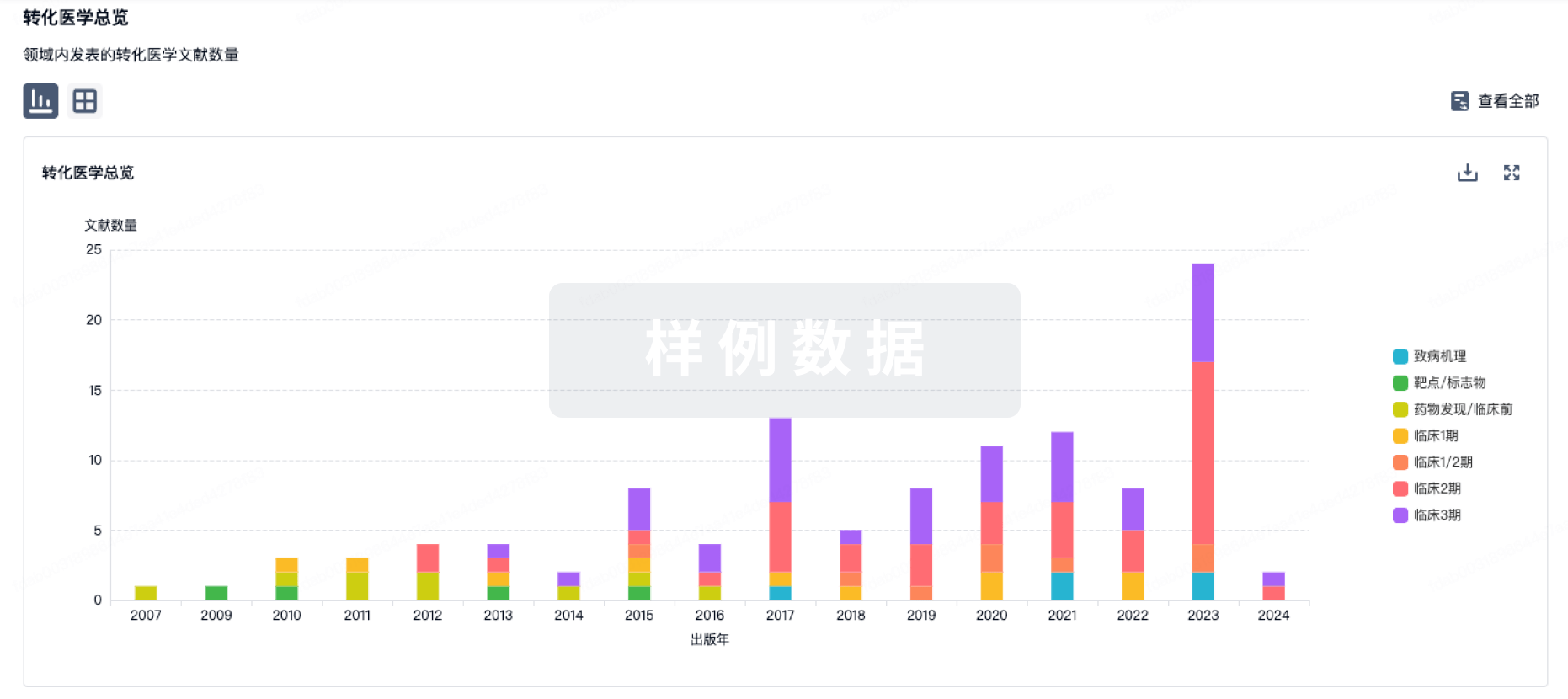
药物交易
使用我们的药物交易数据加速您的研究。
登录
或
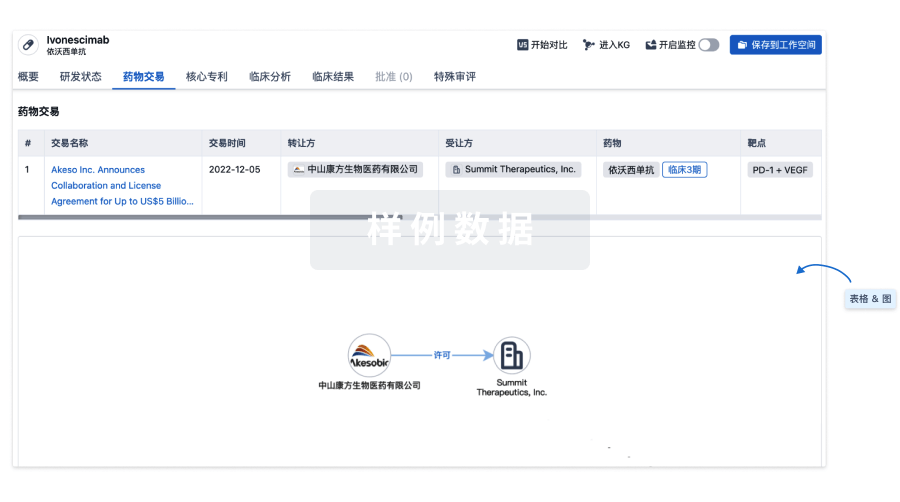
核心专利
使用我们的核心专利数据促进您的研究。
登录
或
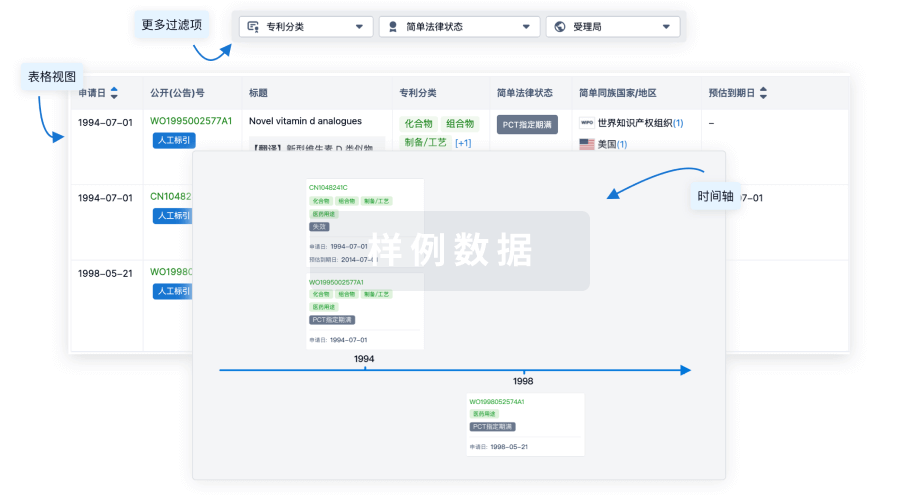
临床分析
紧跟全球注册中心的最新临床试验。
登录
或
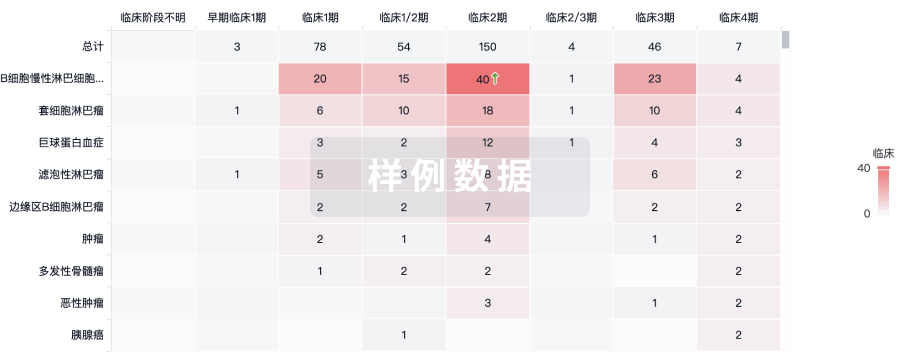
批准
利用最新的监管批准信息加速您的研究。
登录
或
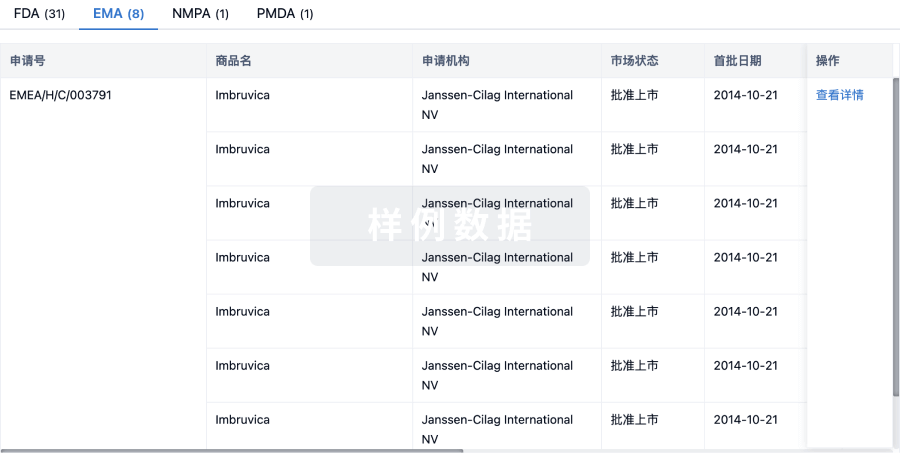
特殊审评
只需点击几下即可了解关键药物信息。
登录
或
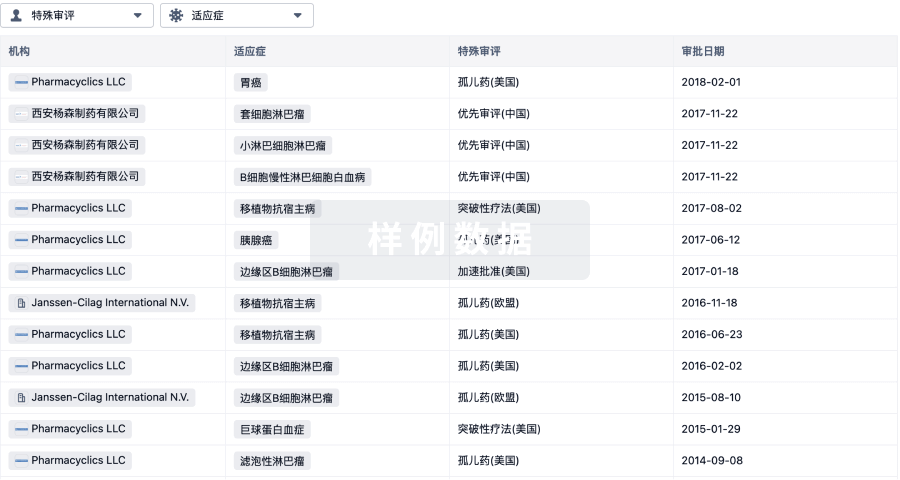
生物医药百科问答
全新生物医药AI Agent 覆盖科研全链路,让突破性发现快人一步
立即开始免费试用!
智慧芽新药情报库是智慧芽专为生命科学人士构建的基于AI的创新药情报平台,助您全方位提升您的研发与决策效率。
立即开始数据试用!
智慧芽新药库数据也通过智慧芽数据服务平台,以API或者数据包形式对外开放,助您更加充分利用智慧芽新药情报信息。
生物序列数据库
生物药研发创新
免费使用
化学结构数据库
小分子化药研发创新
免费使用


